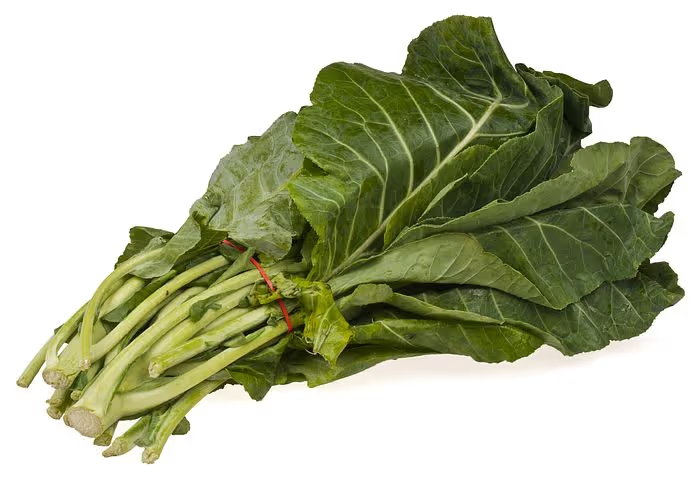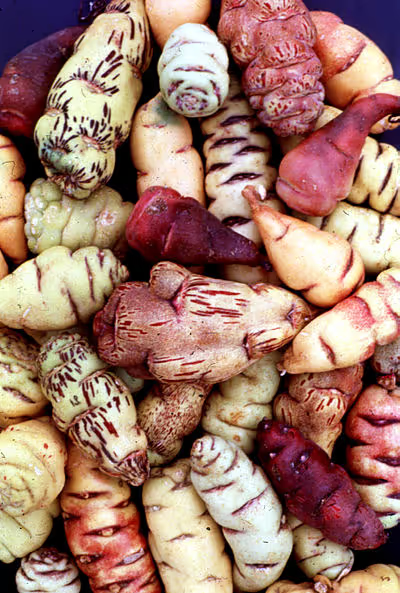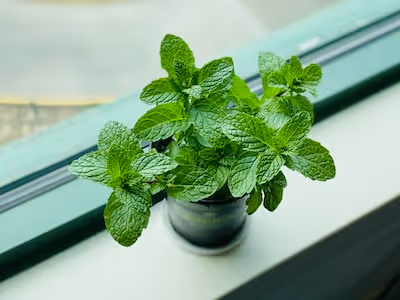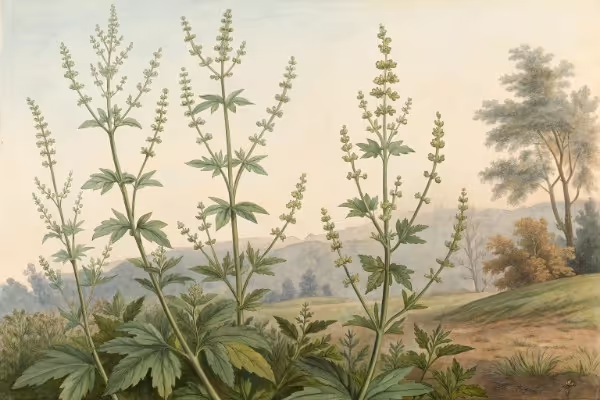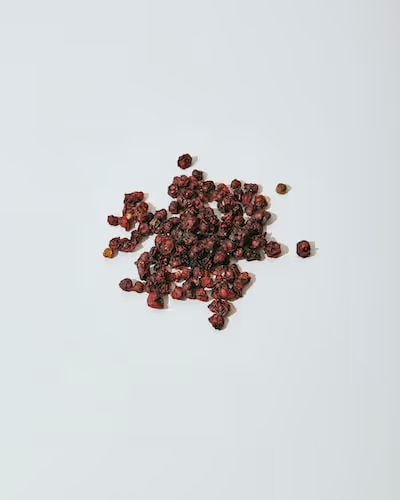Growing Squash: How to Plant, Care, and Harvest Successfully
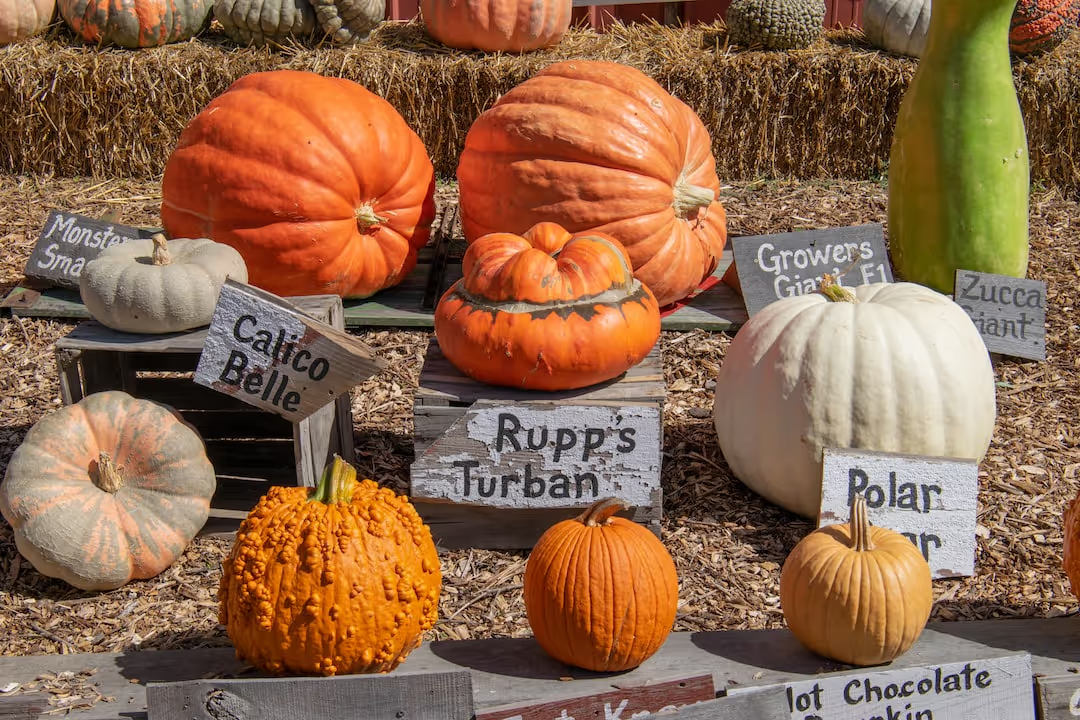
Growing Squash
Growing squash starts with warm soil, good sun exposure, and plenty of room for sprawling vines. Begin your planting after the frost risk passes, giving each seed ample space—about 2-3 feet—to breathe and flourish. Water regularly at the base, keeping leaves dry to sidestep mildew and keep pests at bay. Read on to master squash success, from planting to harvest.
Cheatsheet: Squash Planting & Harvest at a Glance
🌱 Choose & Prep
- Seed or starter plants—Zucchini, pattypan, acorn, butternut, etc.
- Full sun—6+ hours daily
- Soil temp: 65–85°F / 18–29°C
- Soil: Well-drained, rich in compost
- pH: 6.0–7.0
🧑🌾 Plant
- Direct sow after last frost; mound soil for vining types.
- Space: 3–4 ft / 1–1.2 m apart for bush; 4–6 ft / 1.2–2 m for vining.
- Plant seed 1 in / 2.5 cm deep, 2 seeds per spot; thin to 1.
💧 Water & Feed
- 1–2 in / 2.5–5 cm water per week—deep, steady soak
- Keep foliage dry to prevent mildew
- Feed with balanced fertilizer (5-5-5) monthly
- Mulch to retain moisture, suppress weeds
🐝 Pollination & Pests
- Encourage pollinators: plant flowers nearby
- Hand-pollinate if fruit doesn't set
- Scout for squash bugs, vine borers, powdery mildew
- Use row covers, neem oil, or remove pests by hand
✂️ Harvest & Store
- Pick summer squash young (6–8 in / 15–20 cm); winter squash when rinds are hard.
- Use shears for clean cut, leave 1–2 in / 2.5–5 cm stem.
- Cure winter squash: 80°F / 27°C, dry, 10–14 days.
- Store: summer squash in fridge (1 week); winter in cool, dry (up to 4 months).
🛠️ Tools and Products You’ll Need
- Hand trowel
- Watering can/drip hose
- Pruning shears
- Compost/fertilizer
- Row covers (for pests)
- Mulch
🍲 Nutrition & Value
- High in fiber, vitamin C, A, potassium
- Self-sufficiency: 3 plants feed a family all summer
- 75–90 days from seed to harvest
-
Growing Squash: How to Plant, Care, and Harvest Successfully
I plan for Growing Squash the way a chef plans a menu, with timing, heat, and the right tools in reach.
The payoff tastes like late summer and feeds neighbors you did not know you had.
Choose Your Type: Summer vs Winter, Bush vs Vining
Summer squash like zucchini and pattypan are eaten immature and fruit fast, often in 45 to 55 days.
Winter squash like butternut, acorn, kabocha, and delicata mature hard and stash for months, usually in 85 to 110 days.
Varieties I trust
- For containers or tight beds: Astia Zucchini, Eight Ball, Bush Delicata.
- For disease pressure: Dunja Zucchini and PMR varieties resist powdery mildew better than older lines.
- For vine borer pressure: Tromboncino and Butternut types, both Cucurbita moschata, shrug off borers in my humid summers.
- For flavor depth: Kabocha Sunshine, Butternut Waltham, Acorn Honey Bear, Delicata Sweet Dumpling.
Bush types sit tight and suit beds, while vining types wander and benefit from trellis or serious elbow room.
If seed descriptions list codes like PM, ZYMV, or WMV, that signals resistance to powdery mildew or common mosaic viruses, which saves grief later.
Site, Soil, and Prep
Plant in full sun, at least 8 hours, with loose soil that drains fast after rain.
Target pH 6.0 to 6.8, then work in 2 to 3 inches of compost, because squash eat like athletes.
I aim for soil temperature above 60 F, 16 C, to direct seed, though germination wakes up faster nearer 70 to 95 F, 21 to 35 C.
A soil test guides fertilizer, but as a starting line I use a balanced, low-nitrogen organic blend at planting, then side-dress with nitrogen once vines run.
Planting: Seeds, Starts, and Spacing
Set seeds 1 inch deep, 2.5 cm, after frost, or start transplants 2 to 3 weeks before last frost in biodegradable pots to avoid root shock.
Thin to one sturdy plant per spot because crowding invites mildew and slows airflow.
- Bush summer squash: 24 to 36 inches, 60 to 90 cm, between plants, 3 to 4 feet, 0.9 to 1.2 m, between rows.
- Vining winter squash: 3 to 4 feet, 0.9 to 1.2 m, between plants on trellis or 5 to 8 feet, 1.5 to 2.4 m, if sprawling.
- Hills method: 3 to 5 seeds per hill, thin to 2, with hills 4 to 6 feet, 1.2 to 1.8 m, apart.
Row cover keeps beetles off seedlings early, but I remove it at first bloom to allow pollination.
I learned that lesson the hard way, staring at beautiful plants with zero fruit.
Global pumpkins, squash, and gourds exceeded 28 million metric tons in annual production in recent FAO tallies (FAOSTAT), with China leading output.
Water, Mulch, and Heat Management
Deliver 1 to 1.5 inches of water weekly, 25 to 38 mm, via drip or a slow soak at the root zone.
Mulch with straw or compost once soil warms above 70 F, 21 C, to hold moisture and reduce soil splash and weeds.
On scorching afternoons above 95 F, 35 C, I throw 30 percent shade cloth over the trellis to limit blossom abortion.
Morning irrigation dries foliage by nightfall and starves powdery mildew of opportunity.
Trellising and Training
I run cattle panel arches for Tromboncino and small to medium winter squash, then cradle heavier fruits with fabric slings.
Light pruning of congested side shoots improves airflow, but I keep leaves that feed the fruit factories.
Pollination That Actually Sets Fruit
Squash carry separate male and female blossoms, with females showing a tiny fruit at the base.
Bees do the heavy lifting, so I plant borage, basil, and nasturtiums nearby and avoid insecticides during bloom.
Hand pollination before 10 a.m. works like a charm, using a male flower as a brush and touching the stigma of the female.
Extension guides note squash blossoms open for a single morning and are most receptive early in the day (University of Maine Cooperative Extension, Penn State Extension).
Feeding Schedule That Pays Off
At first runner or early bloom, I side-dress with a light nitrogen feed, then repeat after the first summer squash harvest.
Too much nitrogen pushes leaves at the expense of female flowers, so I keep it modest and steady.
Integrated Pest and Disease Playbook
Squash vine borer
Adults fly in early summer and lay eggs at stem bases, and the larvae hollow out vines, which makes plants collapse midday.
I wrap lower stems with aluminum foil, mound soil over nodes to promote backup roots, and grow moschata types that resist attack.
If I catch wilting early, I slit the stem with a clean blade, remove the grub, then bury the wound, which often saves the vine.
Squash bugs
I crush bronze egg clusters on leaf undersides and trap adults under boards, then dispatch in soapy water each morning.
Young nymphs respond to insecticidal soap, and row cover blocks their entry before bloom.
Cucumber beetles and bacterial wilt
These yellow and black beetles chew seedlings and vector wilt, so I start under cover, use yellow sticky cards, and dust stems with kaolin clay during peak flights.
Clean plant debris promptly after harvest to break the life cycle, as urged by Cornell’s IPM fact sheets.
Powdery mildew
First, I choose PM-tolerant lines and keep spacing generous, since mildew thrives with leaf-to-leaf contact at 68 to 81 F, 20 to 27 C.
At first sign, I rotate OMRI-listed options like sulfur or potassium bicarbonate, which many university trials list as effective on contact.
Downy mildew
This one blows in late season on weather fronts, so I watch regional forecasts and harvest aggressively once spots appear.
Good airflow and morning watering buy time, and trellising keeps leaves dry.
Harvest Windows You Can Trust
Summer squash
I pick zucchini at 6 to 8 inches, 15 to 20 cm, while skin shines and seeds stay tender, which keeps plants in production.
Daily harvest beats the zucchini baseball bat problem every time.
Blossoms
Harvest male blossoms at dawn, leave a few for pollination, and refrigerate within an hour for the best texture.
Female blossoms fry beautifully, but I only take extras once fruit set looks steady.
Winter squash
Wait until rinds resist a thumbnail, color is uniform, and the stem turns corky, usually 45 to 55 days after fruit set.
Cut with a 1 to 2 inch stem, 2.5 to 5 cm, never yank, since broken stems open a door to rot.
Curing and storage
Cure most winter squash 10 to 14 days at 80 to 85 F, 27 to 29 C, with 80 to 85 percent humidity, then store at 50 to 55 F, 10 to 13 C, dry and dark.
Butternut holds 2 to 6 months, kabocha 2 to 4, acorn 1 to 2, and delicata 1 to 3, with University of Illinois Extension numbers matching my pantry logs.
Flavor, Safety, and Oddball Problems
Misshapen or aborted fruit usually traces to incomplete pollination or heat spikes, not fertilizer.
Any bitter flesh signals high cucurbitacin, often from stress or ornamental gourd genetics, so I discard it and do not taste again.
Seed Saving, With Guardrails
Squash cross within species, so isolation distances can stretch to hundreds of meters or more for pure lines, which seed keepers and Seed Savers Exchange stress.
Let fruit fully mature, cure, then ferment seeds in water 2 to 3 days, rinse, and dry thoroughly before storage.
Top Gear and Inputs for Growing Squash
- Insect barrier row cover and spring clamps for early protection, removed at first bloom.
- Drip line or drip tape with a pressure regulator and timer, because consistent moisture matters.
- Soil thermometer for go or no-go calls at planting.
- Trellis netting or cattle panels plus fabric slings for heavier fruits.
- Bypass pruners, a harvest knife, and clean blades for borer surgery.
- OMRI-listed sulfur or potassium bicarbonate for powdery mildew and kaolin clay for beetles.
- Reliable seed sources with disease resistance in the catalog notes, such as Johnny’s Selected Seeds, High Mowing, Territorial, or Seed Savers Exchange.
Planting Calendar by Zone, Guided by Soil Temperature
Zones 3 to 4: target early June for direct seeding, or set transplants after nights stay above 50 F, 10 C.
Zones 5 to 6: mid May to late May usually works once soil hits 60 F, 16 C.
Zones 7 to 8: late April to early May runs well if soil is warm and settled.
Zones 9 to 10: March to April plantings sprint, with a second round in late summer for fall harvest.
My Field Notes and Hard-won Tricks
- I interplant with quick cover crops like buckwheat before transplanting, then chop and drop to feed soil biology under the vines.
- I hill stems lightly every two weeks to encourage adventitious roots that rescue a plant after a minor borer hit.
- I pick summer squash with a small stub of stem to avoid tearing, then chill fast to 45 to 50 F, 7 to 10 C, for crisp texture.
- I rotate cucurbits on a 3 to 4 year cycle, never following cucumbers or melons with squash, which aligns with guidance from multiple extensions.
- I plant a decoy patch of blue hubbard at the edge in borer country, which concentrates pests for hand removal.
Remove row covers at first bloom to permit pollination by bees, which is essential for fruit set in squash (UC ANR and Penn State Extension).
FAQ and Quick Answers
Do squash cross with pumpkins and ruin flavor this season, no, cross-pollination only changes seed genetics for next year.
Why do leaves get white powder late summer, powdery mildew thrives in warm, dry, shady conditions, so prune for airflow and treat early.
How much can one plant yield, a healthy zucchini can produce several pounds per week in peak weather, while a butternut vine gives 4 to 10 fruits with good fertility.
Can I grow on a balcony, yes with a 15 to 20 gallon, 57 to 76 liter, container, a compact variety, and a sturdy trellis.
Sourcing Reliable Guidance
For deeper reading, I lean on University of Minnesota Extension, Cornell Integrated Pest Management, UC Agriculture and Natural Resources, and University of Illinois Extension storage tables.
These sources echo what I see in the field, which keeps the science and the soil in conversation.
Frequently Asked Questions about Growing Squash
How much sunlight do squash plants require?
Squash plants thrive on full sunlight, needing at least 6 to 8 hours of direct sun each day. Position them in garden spots free of shade from buildings or large trees to encourage abundant fruit production.
What's the ideal spacing for planting squash?
Allow about 2 to 3 feet (60 to 90 cm) between plants for bush varieties, and 4 to 6 feet (120 to 180 cm) for vining types. Proper spacing promotes good airflow, reduces disease risk, and ensures vigorous growth.
When and how often should squash be watered?
Provide squash plants with consistent watering, giving around 1 to 1.5 inches (2.5 to 4 cm) of water per week. Water deeply at soil level early in the morning to minimize evaporation and decrease potential fungal issues.
Which nutrients support healthy squash growth?
Squash plants respond well to balanced fertilization. Apply a nutrient-rich fertilizer containing nitrogen, phosphorus, and potassium at planting, followed by supplemental feedings of compost or organic fertilizer midway through the growing season.
How can pollination issues with squash be addressed?
If squash plants blossom without setting fruit, inadequate pollination might be the cause. Encourage pollinator visits by planting colorful, nectar-rich flowers nearby. Alternatively, hand-pollinate by transferring pollen from male to female blossoms using a small brush or cotton swab.
How can squash plants be protected from pests and diseases?
Monitor squash regularly for signs of pests like squash bugs or vine borers. Remove affected foliage promptly and consider protective row covers until flowering begins. Rotate crops yearly and maintain clean garden beds to minimize disease.
When is the best time to harvest squash?
Harvest squash while still young and tender, typically around 50 to 60 days after planting. Summer squash should measure approximately 6 to 8 inches (15 to 20 cm) in length, while winter squash require full maturity with hard, richly colored skin.
Growing squash rewards patience and old-school grit. Plant after the last frost, give them sun, and keep the soil rich and moist. Mulch keeps weeds down and roots cool. Watch for powdery mildew and squash bugs—don’t let them get comfortable. Harvest when the skin is tough and the stem dry, and use a sharp knife. Treat your plants right and you’ll have baskets of sweet, nutty fruit. If you’re feeling bold, try branching out with something like silk squash for a twist on the classic. At the end of the season, a good squash patch is proof that care, timing, and a little sweat pay off. Grow with intention, eat with gratitude.
The Homesteader’s Approach to Squash Cultivation: Maximizing Yield and Self-Sufficiency
Selecting Optimal Varieties for Preservation
- Butternut: Thick skin, stores reliably up to 6 months in cool (50°F/10°C), dry conditions.
- Spaghetti: High-yielding, stores 4-6 months; nutritious pasta substitute rich in fiber.
- Acorn: Compact vines, smaller fruits, good storage of 3-4 months; perfect for smaller plots.
Seed Saving and Self-Sustaining Practice
- Save seeds from heirloom varieties to maintain genetic purity and productivity year after year.
- Hand-pollinate with clean brushes, isolating blossoms during peak bloom time for pure seed production.
- Dry collected seeds on paper for 2-3 weeks before storing in labeled glass jars; last up to 4-6 years when cool and dry.
Natural Companion Plants for Pest Management
- Plant squash alongside radishes, nasturtiums, and tansy to repel squash bugs and cucumber beetles naturally.
- Include flowering dill and coriander nearby to attract beneficial insects like lacewings and ladybugs.
Multi-Purpose Uses for Squash Plants
- Squash blossoms are edible: harvest surplus, stuff with herbs and lightly sauté for nutritious meals rich in vitamins A and C.
- Vines and leaves serve as mulch and organic matter after harvest; chop finely and compost for future nutrients.
Find out which plants will thrive in your garden!
Answer a few fun questions and get custom plant recommendations perfect for your space. Let’s grow something amazing together!

start your season
